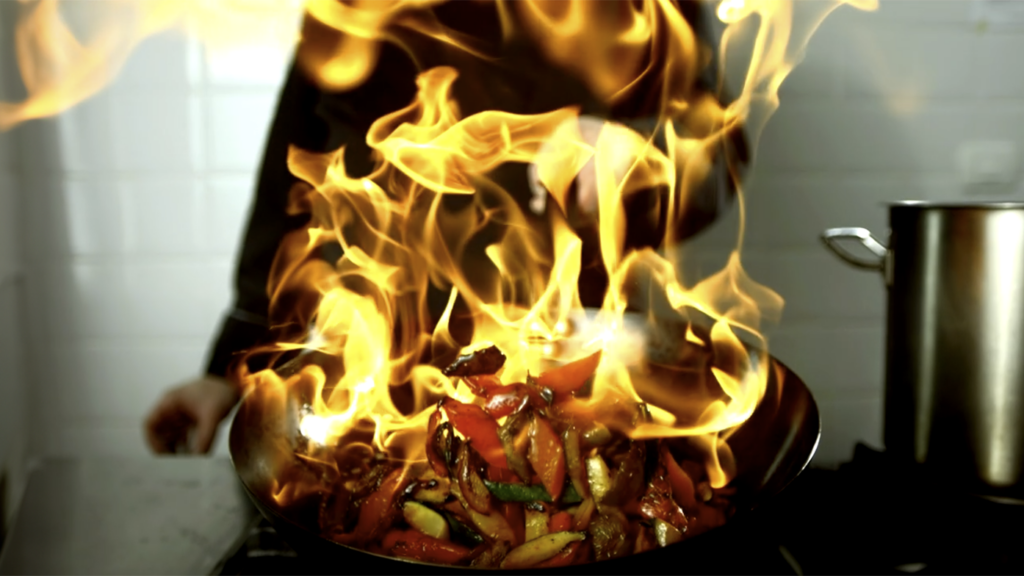The rapid growth of the Asian American population in the U.S. presents a significant opportunity for the food service industry. With their roots spanning over 20 countries, Asian Americans are driving increased demand for diverse Asian cuisines. The boom – driven mainly by immigration – is projected to increase to 35.8 million by 2060. Coupled with U.S. Census Bureau data, is it likely that most Americans will identify as multicultural by 2050 contributing to the evolution of the American palate.
We speculated about how the shift would impact the growth of multicultural groceries and called out the super consumer who favors diverse and healthier food options. The modern, adventurous eater prefers a menu that blends heritage flavors with more traditional American foods. Filled with inspiration from FoodTok on how to upgrade their favorite meals with international influences, has increased the demand for better representation of bold, vibrant spices and ingredients in grocery store inventory. We anticipate specialty grocery stores to surpass mainstream supermarkets as the evolving demographic grows.
The Driving Factor Behind the Influence
Travel plays a huge role in broadening the American flavor palate. U.S. visitors to Asia saw a 33% jump, while Oceania and Central America each saw a 30% increase. Trying unfamiliar foods while traveling can encourage people to be more adventurous with flavors at home. Comfort food–think rice bowls, fried chicken, pho and other nutrient-rich foods are some of the healthiest ways to experience international specialties. Soup is the dish with the “most serious staying power” according to the Specialty Food Association, a mainstay across the board in Asian, Hispanic and Indian cuisine.
“The truth is, Asian and Indian cuisines offer a depth and complexity of flavor that American palates are increasingly appreciating. We’re moving beyond the stereotypical “sweet and sour” or “curry in a hurry” experiences and diving deeper into the rich tapestry of spices, herbs, and cooking techniques that define these culinary traditions,” shares Gabrielle Yap, Senior Editor at CarnivoreStyle.
As Americans travel farther, they return home with awakened palates and are more likely to experiment in the kitchen and seek popular Southeast Asian staples that are now readily available at grocery stores and via subscription delivery services like Umami.
Changing the Way We Eat
Indian cuisine, representing the second-largest Asian American demographic (4.4 million strong), has room for growth within the US restaurant landscape. In a recent study by Picky Eater, Indian restaurants were among the third most popular cuisines (8%) in the world’s most-visited cities, following closely behind Chinese (9.5%) and Italian (8.5%). Local eateries inspired by Mumbai’s famous dabbawalla street food service have opened in New England. Dhaba Wala of Hartford serves traditional Indian and Indo-Chinese tandoori and vegetarian dishes featuring savory and authentic Indian ingredients and flavors.
The growing popularity of global flavors is permeating smaller markets who have also experienced a percentage increase in Asian populations: Pittsburgh, PA (23%) recently welcomed the Novo Food Hall, an Asian-inspired food canteen located inside The Terminal in the Strip District featuring cuisine from seven specific Asian countries. Shoo Loong Kan, a famous Sichuan-style hot pot restaurant from China, opened its first West Coast location in Bellevue, WA (18%). Boston, MA (~6.5%) hosted its first ever Asian Restaurant Week in 2024, highlighting dozens of the region’s leading Asian-owned restaurants from fast-casual concept Bon Me to upscale dining options like Lê Madeline, Pagu, and Sumiao Hunan Kitchen.

 Anjee Solanki
Anjee Solanki



 Nicole Larson
Nicole Larson